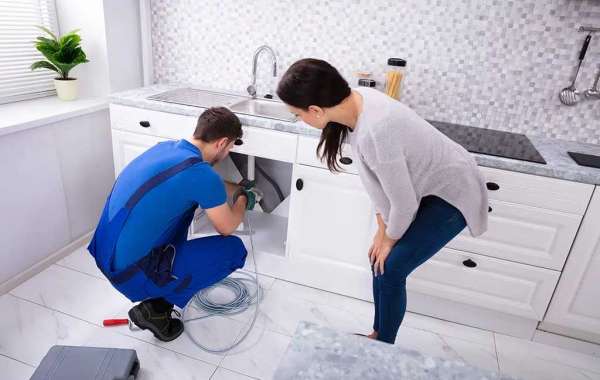Introduction
Slow and clogged drains are among the most common plumbing headaches homeowners face. Before calling a plumber, there are several useful DIY drain cleaning tools and supplies every homeowner should keep on hand. Having the right equipment ready allows you to tackle most minor clogs yourself without needing to purchase anything. Plus, routine use of certain DIY drain maintenance tools helps prevent severe clogs from forming in the first place. Read on for a roundup of inexpensive yet effective items that no household should be without to keep drains free-flowing and working properly. Your trusted drain cleaning company, delivering thorough and efficient solutions for a clear and clog-free plumbing system.
Plunger
No drain cleaning arsenal is complete without a standard sink plunger. The suction created by a plunger can break up mild clogs and clear debris from bathroom and kitchen sink drains. Select a plunger with at least a 6-inch cup diameter fitted with a sturdy wooden handle. For tubs and showers, use a flanged force cup plunger designed to provide a tight seal over drain openings. Remember to seal overflows with a wet rag before plunging bathtub drains. Proper technique is key to allow adequate suction. Don’t just plunge randomly - really work the plunger up and down rhythmically while pressing down firmly. Done right, plunging provides powerful clearance of minor blockages.
Drain Snake
For stubborn clogs that resist plunging, a drain snake or auger is your go-to tool. Feed the end of the snake down the drain and twist it to work through pipes and catch debris. Slowly pull out the snake while cranking the handle and rotating to hook and dislodge gunk clogging the line. Advance the snake farther if needed to reach the blockage. Finish by flushing with hot water. Look for a drain snake at least 6 feet long to access common clog trouble spots. Sturdier metal snakes work better than flimsy wire ones. Just don’t scratch fixtures with the wire.
Baking Soda and Vinegar
Every kitchen should have baking soda and vinegar on hand to serve as an all-natural drain cleaner. Just pour 1⁄2 cup baking soda down the clogged drain followed by 1 cup heated white vinegar. Let the fizzing chemical reaction work 10-15 minutes before rinsing with hot water. The baking soda scrubs away gunk while the vinegar dissolves it. Use this treatment weekly to prevent buildup. For extra potency, substitute boiling water instead of vinegar to melt grease clogs. Avoid using frequent harsh chemical drain cleaners that corrode pipes when this environmentally-friendly combo works just as effectively.
Zip-It Tool
Plastic Zip-It tools are ideal for removing hair clogging bathroom sink and shower drains. Just insert the tool down into the drain, twist gently to grab hold of hair, and slowly pull out. The hooked end captures hair so you can actually see and remove the grime unlike blindly snaking a pipe. Look for versions with integrated drain stoppers to prevent future debris accumulation. Be careful not to scratch fixtures. For routine hair removal, Zip-It tools are quick, easy, and affordable.
Drain Strainers and Catchers
Preventing debris from going down drains in the first place is most effective. Use sink drain baskets to catch food particles and hair before they wash down kitchen sinks. Clean out strainers regularly. Hair catchers over shower and bathroom sinks prevent hair buildup by capturing strands rinsing down those drains. Monthly cleaning or replacement keeps catchers working optimally. Install toilet tank diverters to prevent gunk in the tank from backing up into the bowl. Maintaining strainers avoids needing harsh chemical cleaners after the fact.
Enzyme Cleaners
For routine maintenance cleaning, use an enzyme-based drain cleaner rather than corrosive chemicals. Enzyme cleaners like foaming gels or liquids use natural bacteria and enzymes to digest buildup and odor-causing organic matter in drains. Enzymes break down hair, grease, and food waste without harsh chemicals. Pour down drains weekly to prevent gradual accumulation. Look for enzyme cleaner brands safe for all pipe materials. While pricier than baking soda and vinegar, enzyme cleaners provide hospital-grade cleaning power without caustic chemicals.
Conclusion
Equipping your household with a few key drain cleaning tools and supplies allows you to handle minor clogging issues as soon as they arise. Keeping plungers, drain snakes, baking soda, vinegar, enzyme cleaners, hair catchers, and drain strainers on hand lets you quickly clear or prevent most simple clogs yourself without waiting for a plumber. However, if you’ve exhausted these DIY methods without improvement, it’s time to call a professional. Serious drain blockages often require mechanical cleaning equipment beyond home use. But having the right basic tools readily available can resolve many common sluggish and clogged drain situations efficiently.











